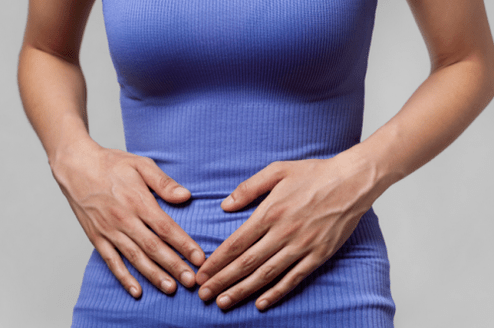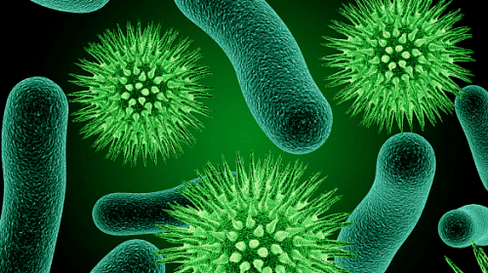One of the types of worms that parasitize the human body are worms or, in other words, helminths. These parasites have an amazing ability to live and multiply extremely fast in a wide variety of internal organs: liver and kidneys, brain and muscle tissue, eyes and intestines.

To our great regret, many of us simply underestimate the danger and severity of these parasites, as diseases caused by worms are found in different parts of the planet. This is why a topic such as worms: symptoms in adult patients are extremely important to everyone.
Worms: causes and types
Many of us think that in order not to get infected with worms, it is enough to wash our hands more often and follow the general rules of hygiene. But it is not so. Almost 70% of the world's population are carriers of helminths.
It is quite difficult to detect the presence of worms in the body of an adult unless you are a doctor specializing in this field of medicine. This is due to the fact that the disease has virtually no visible symptoms and signs.
Here are some of the most common signs that parasites have appeared in the body:
- A person gets tired quickly, he often displays aggression and anger for no apparent reason. Patients are often severely depressed. Such people do not sleep well or suffer from insomnia.
- Pain and discomfort and rumble, bloating and bloating often manifest in the patient's abdomen. Sick people lose appetite and lose weight fast. Or maybe vice versa - patients have a very strong appetite and can not get enough food. Constipation or diarrhea are common.
- Due to the fact that helminths feed on the blood of their "owner", the patient often develops symptoms such as anemia or anemia.
- Carriers of helminths often suffer from all kinds of rashes on the surface of the skin or mucous membranes, and also develop various allergic reactions.
If a person exhibits at least one of these signs, this should alert him and trigger an urgent appeal to a medical institution.
The main route of entry of helminths into the body is the gastrointestinal tract, along with food or drink. Parasitologist specialists identify the following main ways of infection with parasites:
- Helminthiasis. Parasites enter the patient's body through drink or soil. This can be direct contact with animals or the swallowing of eggs by flies placed in food or fruits and vegetables.
- Contact. This route of parasitic infection is likely through contact with an already infected person.
- Biohelminthiasis. In this case, the parasites enter the body due to the consumption of poorly cooked meat by animals, poultry or fish.
- Insect bites. Mosquitoes are one of the most common carriers of worms. At the same time, by biting a sick and healthy person, the mosquito infects the latter with worms.
From the above, it follows that there are many ways that can cause worm infection. But one of the most common and dangerous methods is fecal-oral (with food and water).
The human body is a rather complex mechanism that has some specific barriers that prevent the entry and development of helminths in the body.
One of the first obstacles is saliva, which contains many different enzymes. It is these enzymes that have a unique ability to negatively affect the vast majority of worm species.
If the worms still managed to survive, they penetrate the stomach. But even here awaits a rather unpleasant surprise - hydrochloric acid and various enzymes that have all the necessary properties to destroy a large number of species of parasites. In addition, the natural immunity of the human intestine should not be underestimated.

Intestinal microflora, enzymes, blood cells - these are those tireless fighters against worms. It is these natural barriers that are created to protect our body from parasites. But once this armor is weakened, our body begins to be actively attacked by different types of worms.
To know exactly how to deal with parasites, you need to know their varieties and characteristics. In classifying worms, there are three major groups:
- Round worms. Representatives of this group are also called nematodes and have more than 24 thousand species of parasites. A distinctive feature of roundworms is their shape, which is round in cross section. They have a long and elongated body, both ends of which are pointed. Among the most common varieties of this type of parasite are roundworm, whipworm, breastworm and trichina.
- Tapeworms. Among the most distinctive features of the life cycle of this type of parasite is the fact that they have an intermediate "host", which is an animal or fish. Eating poorly cooked or raw animal meat or fish has an almost 100% chance of being affected by tapeworms. The most common representatives of this species are the broad strip, the bovine strip, the dwarf strip, etc.
- Pinjolle. Representatives of this group have a flat body, in the form of leaves, up to 1, 5 - 2 m long. At one end of the thallus there are two suckers, with the help of which the parasites attach to the substrate. As a rule, strokes affect the intestines, muscle tissue or the human nervous system.
Diagnosis of worms in humans
It is quite difficult to determine the presence of worms in the body of an adult. This is due to the fact that the symptoms of helminthiasis (headache, poor appetite, fever, gastrointestinal tract dysfunction, etc. ) are quite similar to the symptoms of other diseases.
In addition, quite often the symptoms of the presence of helminths in the patient's body are a banal allergy. There are often cases when a parasitologist with a high degree of probability suspects that the patient has worms, laboratory tests do not confirm this and the patient has been unsuccessfully treated for dysbiosis for a long time.
Worms: symptoms in adults, treatment - a question that has plagued our society for over a hundred years. One of the most common and widely used methods for determining helminthiasis in adults is fecal analysis for helminth eggs.
Unfortunately, the effectiveness rate of this method is only 20%. And in the remaining 80% of patients, it is not possible to diagnose the presence of helminths in the body. The low efficiency of such an analysis lies in the fact that specialists do not take into account such a fact as the period of laying eggs by worms. As an example, consider round worms. They lay eggs mainly in the morning (at 4 - 5 o'clock). This means that the stools taken for analysis in the evening will not show the presence of worm eggs in it.
Often parasitologists use a method such as enterobiasis. The essence of this technique is to get the patient an itch in the anal canal. This method, unfortunately, is also not very effective.
The patient's blood test also does not give a high degree of ascertainment of the presence of helminths. In both cases, the reason is the same - the time of analysis and the period of cyst secretion do not coincide.
Some experts use a specially created test, answering questions whose it is possible to determine approximately 50% of the development of helminthiasis in a patient. Here are the questions for this test:
- Do you feel itching in the anus?
- If there is redness on the skin.
- Do you feel nauseous in the morning.
- Do you suffer from sleep disorders.
- Do you have sore mouth?
- Are the lymph nodes swollen?
- Do you notice pain in the muscle area?
If the patient gives a positive answer to 7 questions, this may indicate the presence of helminths in the body of an adult.
Modern medicine suggests the use of such a method as testing with an ultraviolet skin scanner. Unfortunately, this method of diagnosing helminthiasis is not used often. This is due to the fact that the equipment for performing it (ultraviolet skin scanner) is quite expensive and not every medical institution can afford to buy it.
It is possible to determine the presence in a person's feces not only of worm cysts but also of their body parts, using a method such as a histological coprogram. The essence of this method consists in examining several layers of feces under an electron microscope. This method enables parasitologists to get the most accurate results.
To determine the presence of worms in the patient's lungs, first of all, doctors prescribe a radiograph as well as a laboratory examination of the patient's saliva.
Using computed tomography or ultrasound, parasitologists can easily determine the presence of parasites in such organs of the patient as the liver or brain.
A complete blood count or immunological tests will help identify the presence of parasites in the patient's blood. To determine if a patient has helminthiasis, specialists use several methods.
Unfortunately, none of them can give the most reliable result. In this regard, there are cases when the treatment process does not give positive results, but only worsens the clinical picture and the general condition of the patient.
The most effective medicines for treating different types of worms
Adult worms, symptoms and treatment - these two concepts are closely related and have a direct relationship.
The process of treating helminthiasis is a rather difficult task. For example, some diseases caused by helminths are similar to cancer like alveococcosis. Other types of diseases caused by tapeworms or echinococci can only be treated with surgery.
The third type of disease can not be treated with pills. The correctly chosen method of treatment depends on how accurately the type of parasites that are placed in the body of an adult is located.
The complexity of the treatment lies in the fact that anthelmintic drugs destroy only adults, and the larvae and eggs remain in the human body and continue to parasitize there.
All drugs used to kill worms can be conditionally divided into the following groups:
- Means that include Mebendazole. This group of drugs is most often used in the treatment of diseases such as ascariasis, teniasis, echinococcosis, alveococcosis, capillary coccosis, mixed-type helminthiasis, etc.
- Preparations containing Diethylcarbamazine. Basically, these funds have shown excellent results in treating diseases affecting the human lymphatic system, fibers located under the skin and eye tissues.
- Means, the active substance of which is Levamisole. Such tools are usually used for the treatment of non-cotorosis, enterobiasis, trichostrogillosis, trichocephaly, etc.
- Preparations containing Albendazole. Mainly used to treat cysticercosis and ascariasis.
In no case should you forget that self-medication is not recommended when helminthiasis is detected. This can lead to complications and worsening of the clinical picture of the disease.
The main reason for this is that most anthelmintic drugs have toxic properties and require a regimen created specifically for their administration.
To achieve a positive treatment, it is necessary to contact a medical professional, whose specialization is parasitology. Moreover, a prerequisite for treatment is strict adherence to the recommendations of doctors.
Parasites of the human body like worms are extremely dangerous to human health. In order for the treatment process to be as effective as possible, parasitologists are making every effort to determine as accurately as possible which species the parasites that have settled in the patient's body belong to.
To destroy the worms, doctors use a fairly large list of drugs. But self-medication is not recommended at all. For the treatment of helminthiasis, special treatment regimens, dosage and course duration are being developed. It is recommended to strictly adhere to the instructions of parasitologists.



























